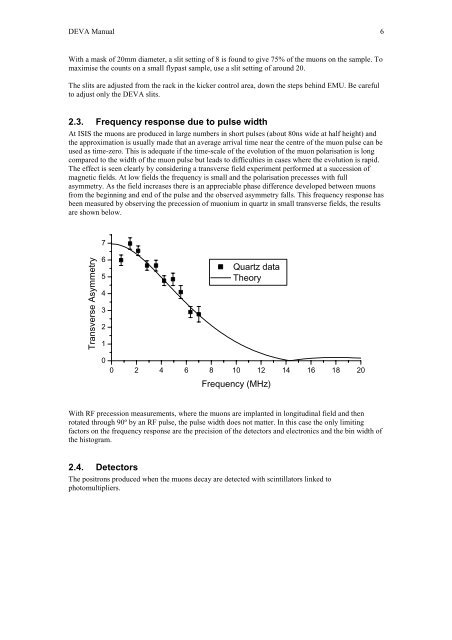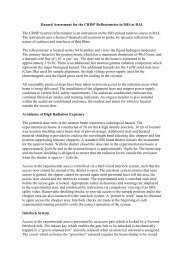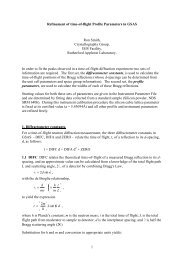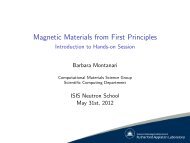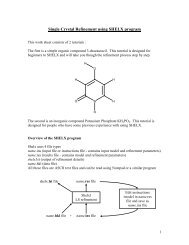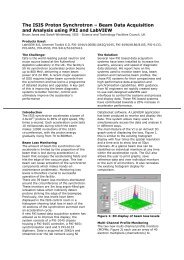Deva user manual - ISIS
Deva user manual - ISIS
Deva user manual - ISIS
Create successful ePaper yourself
Turn your PDF publications into a flip-book with our unique Google optimized e-Paper software.
DEVA Manual 6<br />
With a mask of 20mm diameter, a slit setting of 8 is found to give 75% of the muons on the sample. To<br />
maximise the counts on a small flypast sample, use a slit setting of around 20.<br />
The slits are adjusted from the rack in the kicker control area, down the steps behind EMU. Be careful<br />
to adjust only the DEVA slits.<br />
2.3. Frequency response due to pulse width<br />
At <strong>ISIS</strong> the muons are produced in large numbers in short pulses (about 80ns wide at half height) and<br />
the approximation is usually made that an average arrival time near the centre of the muon pulse can be<br />
used as time-zero. This is adequate if the time-scale of the evolution of the muon polarisation is long<br />
compared to the width of the muon pulse but leads to difficulties in cases where the evolution is rapid.<br />
The effect is seen clearly by considering a transverse field experiment performed at a succession of<br />
magnetic fields. At low fields the frequency is small and the polarisation precesses with full<br />
asymmetry. As the field increases there is an appreciable phase difference developed between muons<br />
from the beginning and end of the pulse and the observed asymmetry falls. This frequency response has<br />
been measured by observing the precession of muonium in quartz in small transverse fields, the results<br />
are shown below.<br />
7<br />
Transverse Asymmetry<br />
6<br />
5<br />
4<br />
3<br />
2<br />
1<br />
0<br />
Quartz data<br />
Theory<br />
0 2 4 6 8 10 12 14 16 18 20<br />
Frequency (MHz)<br />
With RF precession measurements, where the muons are implanted in longitudinal field and then<br />
rotated through 90º by an RF pulse, the pulse width does not matter. In this case the only limiting<br />
factors on the frequency response are the precision of the detectors and electronics and the bin width of<br />
the histogram.<br />
2.4. Detectors<br />
The positrons produced when the muons decay are detected with scintillators linked to<br />
photomultipliers.


